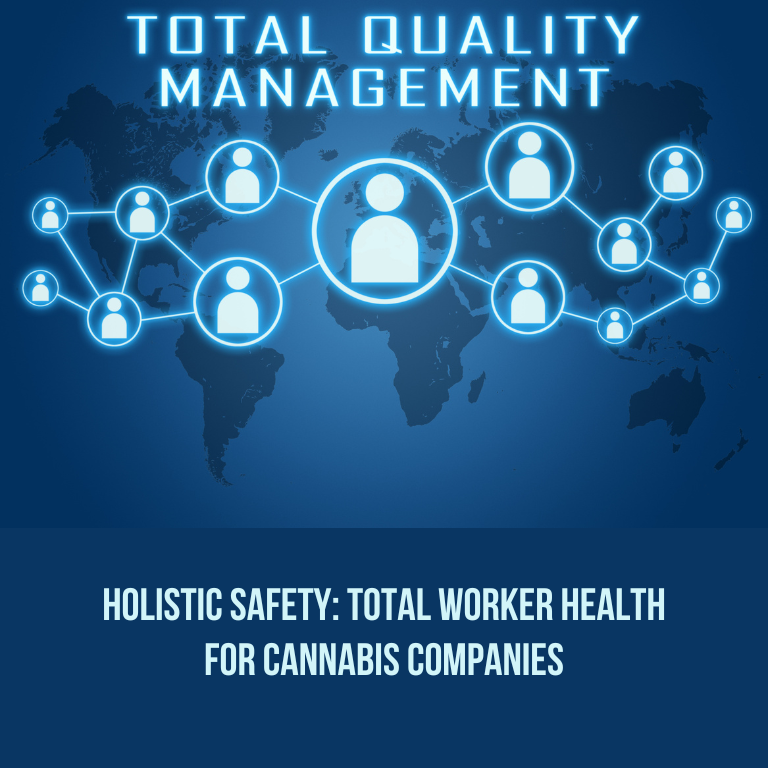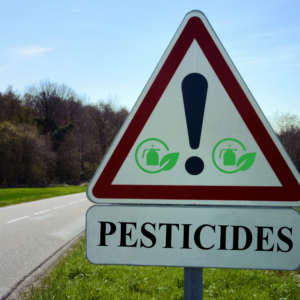Holistic Safety: Total Worker Health for Cannabis Companies

The cannabis industry, one of the fastest-growing sectors in the world, presents unique health and safety challenges for its workforce. As more companies emerge to meet increasing demand, ensuring the health and well-being of employees is paramount. Adopting a comprehensive, “Total Worker Health” approach can help cannabis companies create safer, healthier work environments, ultimately boosting productivity, employee morale, and workplace retention.
This article will explore how the Total Worker Health framework applies to the cannabis industry, highlighting its benefits, specific safety concerns in cannabis operations, and steps companies can take to foster holistic employee wellness.
Understanding Total Worker Health (TWH)
Total Worker Health (TWH) is a framework developed by the National Institute for Occupational Safety and Health (NIOSH) that promotes comprehensive, integrated health and safety practices. Unlike traditional safety programs, which often focus solely on preventing physical injury, TWH addresses all aspects of worker well-being, including mental, emotional, and social health. This approach recognizes that work-related factors, like stress and burnout, significantly impact overall health and performance.
For cannabis companies, adopting TWH means acknowledging the various risks that employees face and working to minimize these risks across different areas—physical safety, mental health, ergonomic practices, and more.
Why Total Worker Health Matters in the Cannabis Industry
Cannabis companies, from cultivation and processing to retail, face specific health and safety challenges. These include handling hazardous materials, working with machinery, repetitive tasks, and even the high-stress nature of the job due to regulatory compliance and the evolving legal landscape. A TWH approach helps cannabis businesses to:
Improve employee retention by demonstrating commitment to worker well-being.
Reduce workplace accidents by proactively identifying and mitigating risks.
Boost productivity through the well-being and satisfaction of employees.
Enhance company reputation by adhering to best practices in worker health and safety.
Key Health and Safety Risks for Cannabis Workers
Cannabis businesses encounter unique safety challenges. Here are some specific risks associated with the industry:
Exposure to Chemicals and Allergens: Employees in cultivation facilities may be exposed to pesticides, fertilizers, mold, and other biological agents. Proper handling procedures, protective equipment, and environmental controls are essential.
Repetitive Strain Injuries: Trimming, packaging, and labeling can require repetitive movements, leading to strain injuries. Employers must consider ergonomic workstations and regular breaks to reduce this risk.
Mental Health Strain: High stress from regulatory pressures, physically demanding work, and sometimes uncertain legal status can impact employees’ mental well-being.
Physical Safety Hazards: Machinery in processing facilities and exposure to electricity, sharp tools, or heavy equipment pose physical risks, making proper training and protective gear critical.
Security and Safety in Retail: Retail employees are at risk of theft, robbery, or violence due to the high-value nature of cannabis products. Security measures and emergency response training are essential.
Implementing a Holistic Total Worker Health Program in Cannabis Companies
To address these challenges and foster a healthier, safer workplace, cannabis companies can take these steps:
Establish a Health and Safety Committee
Forming a committee dedicated to health and safety can streamline efforts and ensure that all areas of worker well-being are addressed. A health and safety committee typically includes representatives from different departments to identify risks and propose solutions. This group can drive the development and implementation of Total Worker Health strategies, ensuring company-wide commitment.
Integrate Ergonomics into Daily Operations
Ergonomics is key to preventing repetitive strain injuries. Assessing workspaces, tools, and tasks with an ergonomic lens can reduce fatigue, increase productivity, and decrease the likelihood of injuries. Cannabis companies can:
Design trimming stations with adjustable heights and padded surfaces.
Invest in ergonomic tools, such as scissors and knives that reduce hand strain.
Encourage regular breaks and stretching exercises to minimize strain from repetitive tasks.
Implement Comprehensive Training Programs
Training should go beyond standard operating procedures to encompass mental health awareness, ergonomics, chemical handling, and safety protocol drills. Training for employees in high-stress environments, like retail, should also include conflict de-escalation tactics and emergency preparedness. Key areas of focus in training programs include:
Safe handling of cannabis plants and exposure prevention techniques.
Procedures for handling hazardous materials and responding to spills.
Awareness of mental health resources and stress management techniques.
Security and emergency response training for retail staff.
Prioritize Mental Health and Stress Management
Mental health is often overlooked, especially in industries focused on physical safety. However, mental well-being is equally crucial, particularly in an industry as complex and tightly regulated as cannabis. Employers can support mental health by:
Offering stress management workshops or wellness programs.
Providing access to mental health counseling and Employee Assistance Programs (EAPs).
Fostering a culture of open communication where employees feel safe discussing mental health.
Invest in Security Systems for Retail Environments
Cannabis retail stores often hold large quantities of high-value products, making them potential targets for theft or robbery. A robust security system that includes surveillance cameras, alarm systems, and controlled access can protect employees. Additionally, training staff to handle high-risk situations, such as de-escalation techniques and emergency protocols, is essential.
Encourage Work-Life Balance and Flexibility
The demanding hours and physical nature of cannabis jobs can contribute to burnout and fatigue. Providing flexible schedules or remote work options for administrative roles can help employees balance personal obligations. Additionally, flexible paid time off policies and scheduled mental health days show employees that their wellness is a priority.
Maintain Clear Communication Channels
A TWH program relies on clear, continuous communication. Employees should feel comfortable bringing safety concerns to management, suggesting improvements, and reporting hazards without fear of retribution. Regular feedback loops, such as anonymous surveys, help gauge employee satisfaction and identify new areas for improvement.
The Role of Management in Supporting Total Worker Health
For TWH initiatives to succeed, company leadership must be actively involved. Management can support TWH efforts by:
Allocating sufficient resources for safety equipment, ergonomic tools, and wellness programs.
Modeling safe and healthy behaviors, such as taking breaks and adhering to safety protocols.
Providing training and continuous education on TWH principles, reinforcing their importance and applicability across all levels of the organization.
Measuring the Success of Total Worker Health Programs
To ensure that TWH programs are effective, cannabis companies should regularly evaluate their impact on employee health, safety, and job satisfaction. Metrics to track include:
Reduction in workplace accidents and injuries: A decrease indicates that safety measures and ergonomic practices are working.
Employee satisfaction and engagement: Surveying employees about their well-being and sense of security can reveal areas for improvement.
Turnover rates: Lower turnover suggests that employees feel valued and supported in a safe workplace.
Absenteeism: Reduced absenteeism often correlates with better mental and physical health.
Regular audits and assessments of the work environment, policies, and practices help companies stay aligned with the evolving needs of their workforce and maintain compliance with industry regulations.
The Benefits of a Holistic Safety Approach in the Cannabis Industry
Taking a Total Worker Health approach not only benefits employees but also strengthens the business. Healthier, happier workers are more productive and engaged, which translates to higher quality products and improved customer experiences. Additionally, TWH initiatives help build a positive company reputation, making it easier to attract top talent in an increasingly competitive industry.
From managing unique hazards to fostering a culture of wellness and communication, cannabis companies that prioritize Total Worker Health are better equipped to navigate the complexities of this growing industry.
In the cannabis industry, a holistic approach to safety is not only beneficial but essential. By implementing Total Worker Health practices, companies can support their employees’ overall well-being, protect them from industry-specific risks, and improve productivity and retention. As the sector continues to evolve, adopting comprehensive health and safety practices will allow cannabis companies to remain resilient, competitive, and, most importantly, a place where employees feel valued and protected.











